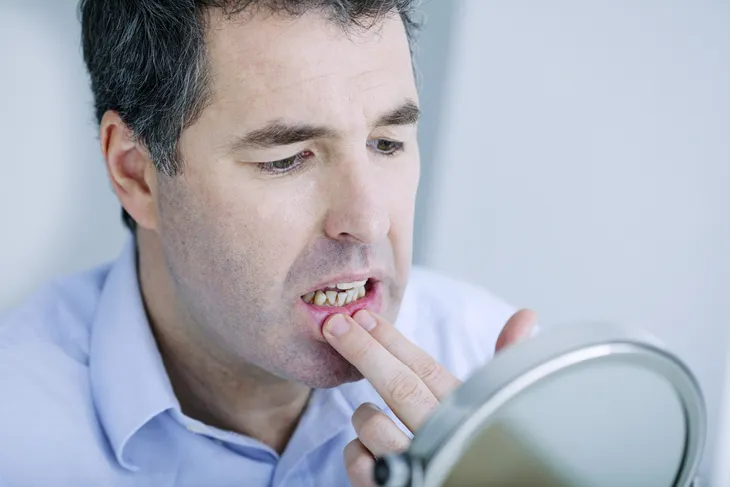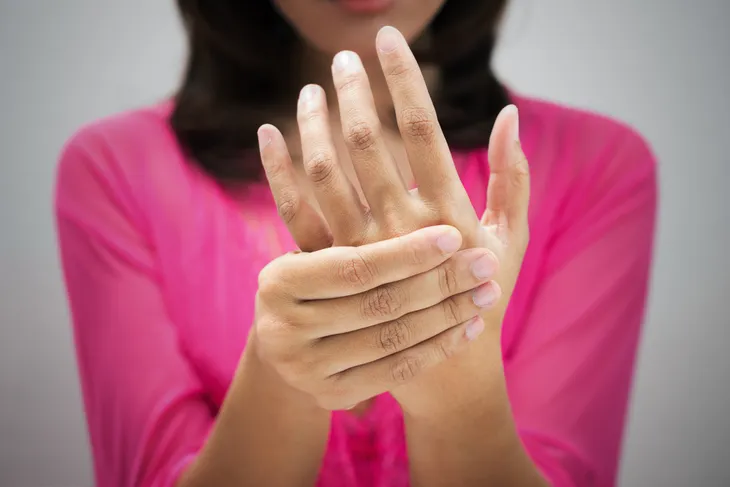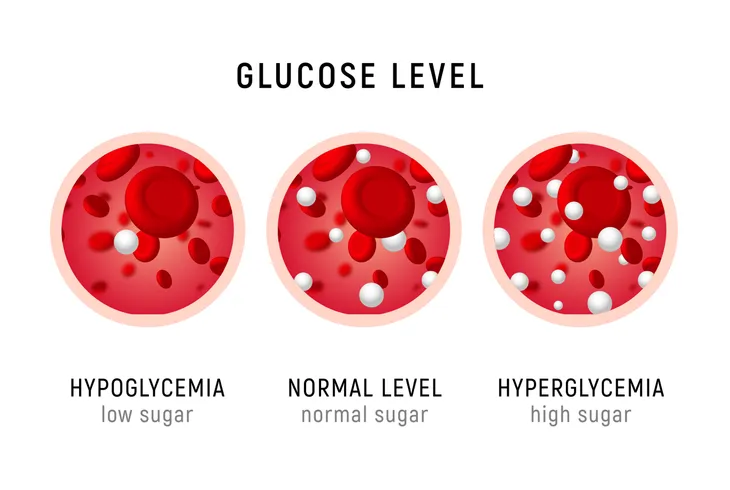If you have been diagnosed with a polygenic disorder, you already know the steps to avoid your blood sugar getting too high. But as Self points out, many people have pre-polygenic disorder, meaning their blood sugar is elevated but they’re not aware of it. And what’s more, is that 21-percent of those with a polygenic disorder don’t know they have the disease.
High blood sugar may also occur in those without a polygenic disorder or high-risk factors, but it’s more concerning when it’s a diabetic patient. That’s likely because unchecked high blood sugar can cause serious complications such as a diabetic coma. Read on to learn 8 possible signs of high blood sugar…
What Is Considered High Blood Sugar?
High blood sugar, also known as hyperglycemia, is easily measurable. Blood glucose (sugar) is measured by milligrams per deciliter (mg/dL) – this number is considered high when it’s above a fasting blood sugar of 125-mg/dL, notes Self.
The source also notes you can have hyperglycemia if your blood sugar levels rise above 180-mg/dL an hour or two after eating. But if you don’t have a health issue involving the hormone that controls blood glucose, “Our bodies are typically pretty great at keeping our blood sugar in perfect balance,” says the source.
Signs of High Blood Sugar
Frequent Urination
So perhaps you shouldn’t have had that third cup of coffee, and now you’re making multiple trips to the bathroom. Frequent urination is a “common but not-so-obvious” symptom that your blood sugar may be spiking, according to Everyday Health.
The reason? It’s called polyuria, and it happens when there’s excess glucose in the blood that makes your kidneys start to work harder to get rid of it. If your kidneys can’t deal with the high sugar levels, then the extra sugar is eliminated through urine. This can lead to dehydration, which has its own complications. Keep in mind, frequent urination is also tied to extreme thirst. So be on the lookout for these signs.
You’re Feeling Unusually Fatigued
You’d think that having a bunch of sugar coursing around your veins would give you a lot of energy, but it turns out the opposite can happen. Self says “feeling tired” is often the first early sign of high blood sugar – and this can occur in people without a polygenic disorder.
While many conditions might leave you feeling more worn out than usual, this sugar fatigue may set in soon after you’ve consumed a meal. If you regularly find yourself looking for a pillow to lay your head on after eating, then perhaps have your doctor check it out.
You’re Hungry All the Time
Another sign of high blood sugar is a medical term called polyphagia, or excessive hunger. When you have a polygenic disorder, the glucose doesn’t easily enter your cells to provide energy. This is often due to low levels of the hormone that regulates glucose in the body, or resistance to that hormone. Without the ability to convert glucose into energy you will remain hungry.
Unexplained Weight Loss
Unexplained weight loss is a possible sign of high blood sugar that may be present for a variety of health problems, from depression to tuberculosis. However, in this case, the hormone that handles sugar isn’t doing its job, and as a result, glucose doesn’t make it into the cells from the blood to provide energy.
In this scenario, the body will then turn to fat and muscle to burn as energy sources, which can cause a noticeable drop in weight. At the same time, you might find your appetite has spiked. The source suggests seeing a doctor if you’ve unintentionally dropped more than 5-percent of your body weight – or more than 10-lbs – in about 6 to 12-months.
Vision Problems
Everyday Health explains that your eyes might be a window into your blood sugar situation. The source says if you’re experiencing high levels, “You may notice that your vision isn’t as clear as it used to be and that things may appear a bit blurry.”
The reason for this is that high blood glucose (sugar) can cause the eye’s lenses to become swollen due to fluid leaking in. This changes the shape of the lens and throws the focus off a bit. Headaches might also accompany the blurriness. These signs could also indicate you need new glass but it’s still worth keeping in mind.
Slow Healing Wounds
Self lists a number of possible signs of high blood sugar, including recurrent infections and slow-healing sores. The former can happen with “consistent hyperglycemia,” which hinders your immune system and makes it harder to fight off infections.
The latter can be caused by the impact to your circulatory system from high blood sugar, explains the source. The condition can lower blood flow and consequently the healing process. Lingering sores on the feet in particular are a sign that circulation has been impacted.
Oral Health Problems
Self says if you find yourself having oral issues such as tooth decay, gum disease, or even bad breath, it could be a sign that your blood sugar is too high. The source notes, bleeding gums is one of the first signs.
This happens because saliva contains glucose. When there’s too much glucose in the mix, it encourages the growth of harmful bacteria that – combined with food residue – leads to harmful plaque formation.
Yeast Infections Sneak up More Often
Everyday Health explains that hyperglycemia may be a root cause of a yeast infection. The “culprit,” says the source, is a yeast known as Candida albicans that can cause itching, redness, soreness, and pain.
It says having extra glucose in the blood is not ideal, because this yeast uses glucose as a source of food. It also notes, high blood sugar leaves behind more glucose in the urinary tract – which can be made worse by medications known as SGLT-2 inhibitors.
You Feel Tingling in Your Extremities
Sometimes you’ll feel “pins and needles” in your skin or even numbness if you’ve been sitting awkwardly for a while. But it usually passes pretty quickly. Meanwhile, “tingling and numbness” in the hands and feet can be signs that your blood sugar is off the charts.
This is from nerve damage known as diabetic neuropathy. Along with the tingling, some patients feel outright pain as well. It usually is a long-term symptom of polygenic disorders, but it can also happen if your condition isn’t being properly managed.
Normal Blood Sugar Levels
Now that we know what high blood sugar levels are, and the signs to look out for, let’s take a look at normal (or healthy) blood sugar levels.
The ADA states a fasting blood sugar level of less than 100-mg/dL is considered a normal level in people without a .
Low Blood Sugar Levels
It’s also possible to have low blood sugar levels. This is known as hypoglycemia and occurs when your blood sugar levels drop below normal.
So what is considered low blood sugar levels? Mayo Clinic says a fasting blood sugar of 70-mg/dL or lower is considered low blood sugar. Hypoglycemia requires immediate treatment by getting your levels back to normal. This can be done with the help of high-sugar drinks or food, or with medication.
When to See A Doctor
If you’re experiencing any of the signs of high blood sugar it’s important that you speak with your doctor. Even if you don’t think you have a polygenic disorder or are at risk of developing the disease, talking to a professional about your symptoms will help you get some answers.
Your doctor will be able to determine if your high blood sugar is caused by a polygenic disorder or pre-polygenic disorder. They will likely request a blood test to examine your levels and their causes.
















